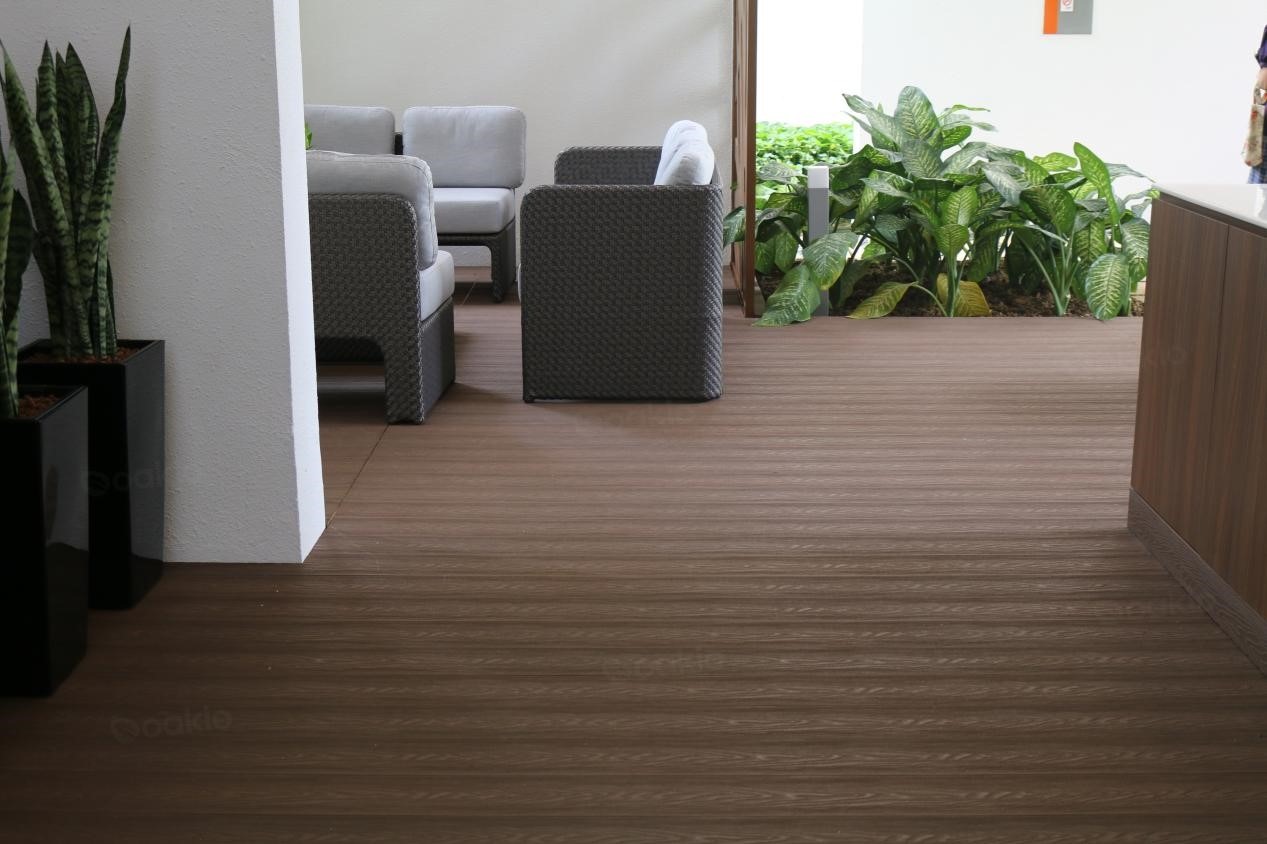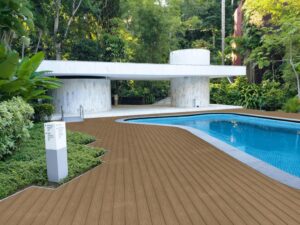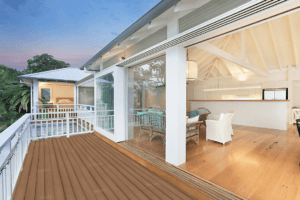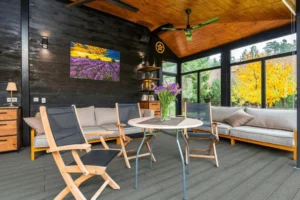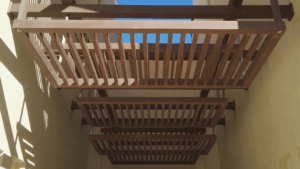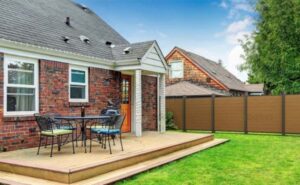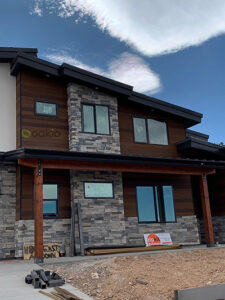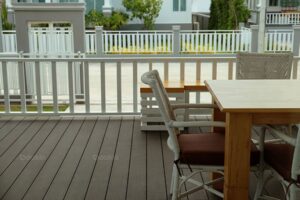Will WPC Flooring Get Hot In the Sun?
Wood Plastic Composite (WPC) flooring has gained popularity for its durability, versatility, and aesthetic appeal. However, concerns about heating in WPC flooring, especially when exposed to sunlight, have sparked discussions among homeowners and designers. In this comprehensive guide, we delve into the factors that influence the temperature of WPC floors in sunlight and explore strategies to mitigate heat buildup.
Factors That Will Cause WPC Flooring Get Hot
The temperature of WPC flooring in sunlight is influenced by several factors, including the color, texture, and composition of the flooring material, as well as environmental conditions such as sunlight intensity, air temperature, and humidity levels.
Darker-colored WPC floors tend to absorb more heat from sunlight compared to lighter-colored floors, resulting in higher surface temperatures. Similarly, textured or embossed WPC flooring may retain more heat due to increased surface area and thermal absorption.
Is It Harmful to Expose WPC Flooring to the Sun?
Exposing WPC flooring to the sun can have both positive and negative effects, depending on various factors such as the quality of the material, installation method, and climate conditions. Generally, WPC flooring is designed to withstand outdoor exposure to some extent, but prolonged and intense sunlight exposure can lead to certain issues.
One potential concern with exposing WPC flooring to the sun is fading. Like many other materials, WPC flooring may experience color fading over time when subjected to UV radiation from the sun. This can result in a duller appearance and loss of vibrancy in the flooring, especially if it lacks UV protection. However, high-quality WPC flooring often incorporates UV inhibitors in its composition to minimize fading and maintain its color intensity even under direct sunlight.
Another issue is thermal expansion. WPC flooring can expand and contract with temperature changes, and prolonged exposure to the sun’s heat can exacerbate this phenomenon. In extreme cases, excessive heat absorption can cause WPC flooring to expand beyond its normal limits, leading to buckling, warping, or distortion. Proper installation techniques, including leaving adequate expansion gaps and using appropriate fasteners, can help mitigate the risk of thermal expansion-related damage.
Additionally, exposure to sunlight may affect the structural integrity of WPC flooring over time. While WPC is generally resistant to moisture and rot, prolonged exposure to UV radiation can weaken the material and make it more susceptible to cracking, splintering, or degradation. This is especially true in regions with intense sunlight and high temperatures.
The impact of sunlight exposure on WPC floors varies depending on whether the flooring is installed indoors or outdoors. In indoor settings, controlled environmental conditions and limited sunlight exposure typically mitigate temperature concerns associated with WPC flooring. However, in outdoor applications, direct sunlight, fluctuating temperatures, and exposure to the elements can amplify heat retention and thermal expansion issues in WPC floors.
How To Mitigate Heat Buildup in WPC Floors
To mitigate heat buildup in WPC floors exposed to sunlight, homeowners and designers can implement several strategies:
1. Choose Lighter Colors: choose lighter-colored WPC flooring, which reflect more sunlight and absorb less heat compared to darker colors. Lighter hues not only help maintain cooler surface temperatures but also enhance the visual brightness and spaciousness of interior spaces.
2. Use Shading Solutions: Install shading solutions such as awnings, pergolas, or outdoor umbrellas to provide relief from direct sunlight and reduce heat exposure on WPC floors. Strategic placement of shade structures can create comfortable outdoor environments while preserving the integrity of WPC flooring materials.
3. Implement Proper Ventilation: Ensure adequate ventilation and airflow around WPC floors to dissipate heat and prevent heat buildup in enclosed or poorly ventilated spaces. Consider installing vents, fans, or louvers to promote air circulation and thermal comfort in indoor and outdoor environments.
4. Apply Heat-Reflective Coatings: Consider applying heat-reflective coatings or surface treatments to WPC floors to minimize heat absorption and enhance thermal performance. These specialized coatings can help reduce surface temperatures and mitigate the risk of heat-related damage or deformation in WPC flooring materials.
The impact of sunlight exposure on WPC floors varies depending on whether the flooring is installed indoors or outdoors. In indoor settings, controlled environmental conditions and limited sunlight exposure typically mitigate temperature concerns associated with WPC flooring. However, in outdoor applications, direct sunlight, fluctuating temperatures, and exposure to the elements can amplify heat retention and thermal expansion issues in WPC floors.
Conclusion
While WPC floors may experience some degree of heat buildup in sunlight, strategic design choices and proactive measures can help mitigate temperature concerns and preserve the performance and longevity of WPC flooring materials. By selecting lighter-colored options, incorporating shading solutions, ensuring proper ventilation, and applying heat-reflective coatings, homeowners and designers can strike a balance between aesthetics and functionality in indoor and outdoor environments. Ultimately, the choice of WPC flooring should consider not only its visual appeal and durability but also its thermal properties and suitability for specific applications. By understanding the factors influencing heat retention in WPC floors and implementing appropriate mitigation strategies, homeowners can enjoy the benefits of WPC flooring while minimizing the impact of sunlight exposure on thermal comfort and floor performance.
Trending Reading
What Are the Differences Between the WPC Board and PVC Board?
[2024 Update] How Long Does WPC Decking Last?
